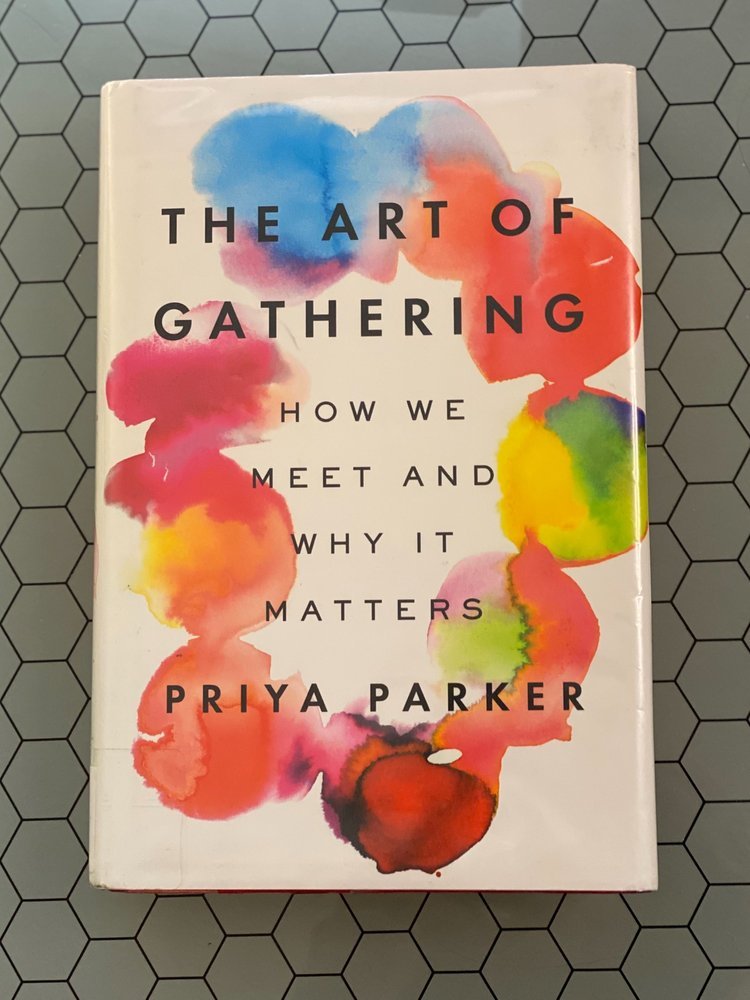Book Summary: The Art of Gathering, by Priya Parker
Priya Parker has validated my instincts to be a little uptight when it comes to hosting meetings in her book, The Art of Gathering. I’m always thinking about the details; the meeting purpose, who is included, the logistics of the room, what the meeting planner will say and how we will open and close the discussion. Sometimes it feels like my colleagues think I’m over-engineering it. This book includes demonstrated proof about why these things matter.
QUICK SUMMARY
The Art of Gathering is based on Priya Parker’s extensive experience as a professional facilitator. It has a very logical and chronological flow that helps the reader to understand that you can and should curate the experience of your gatherings. Doing this leads not only to efficiency, but more importantly to deeper meaning and connection with others. This book covers:
Why your gathering must have a well defined purpose
Being thoughtful about who is invited
How to leverage space and logistics to enhance your gathering
Why good controversy is important
Being intentional about beginnings, physical surroundings, and endings
IDEAS THAT RESONATED
In a world of infinite choices, choosing one thing is a revolutionary act. [Page139]
In this digital age especially, it’s so easy it’s almost expected that we’re multi-tasking. People often describe that when they are at home they’re thinking about work and when they’re at work they are thinking of home. This is not ideal. Apply for yourself a promise to be more present, but also think about how you can create a culture of single-tasking in your organization.
A well-meaning desire not to offend can devolve into a habit of saying nothing that matters. [Page 232]
This is from a chapter called “Cause Good Controversy”. Parker explains that we’ve been socialized to prioritize harmony and avoid conflict, especially in social gatherings. You may be reluctant to engage in deeper and more meaningful conversations with acquaintances because you remember long-standing advice around not talking about controversial topics like politics, religion, sex, or money. But our views on these things are part of who we are. The happy consequence of having deeper conversation, according to recent research, is that even when the deep conversation is with acquaintances and strangers can have the same positive effect on your happiness levels as talking with a close friend. If you want to to take a baby step in the direction of deeper conversations try replacing a question like “how was your weekend?” with “what was your happiest moment of the weekend?”
Connect your guests. [Page 92] Fuse your guests. [Page 187]
These are different but related concepts about how you should facilitate connection and collaboration between the participants of your gathering. Hosts often skip introductions to get to the order of the day, but this is a mistake. Parker says “It’s hard to build a movement if you don’t know who’s in it.” Maybe your work meeting and topic isn’t exactly a movement, but it is likely a common goal between disparate people. Knowing who is who is incredibly valuable. When I find myself in a work meeting of 10 or less where I don’t know the participants, if the host begins without introducing us I’ll often pause them and say “I’m not sure that I’ve met everyone on the call before, would you mind if we started with quick introductions?”
On fusing guests, Parker cites a 2001 John Hopkins study of surgeons that showed a 35% reduction in surgical complications and deaths when the team conducted a pre-surgery meeting to do introductions and share concerns. Your work may not be life-or-death, but the principle of ensuring inclusive introductions and opportunity to engage translates into better outcomes no matter what your occupation or industry.
🎧 PODCAST RECOMMENDATION: If you’re interested in this topic, but not up for reading the book, listen to Parker’s interview about the book in this episode of Unlocking Us with Brene Brown.
Drop your email below if you liked this book summary and you want to be the first to know when new content is available.

